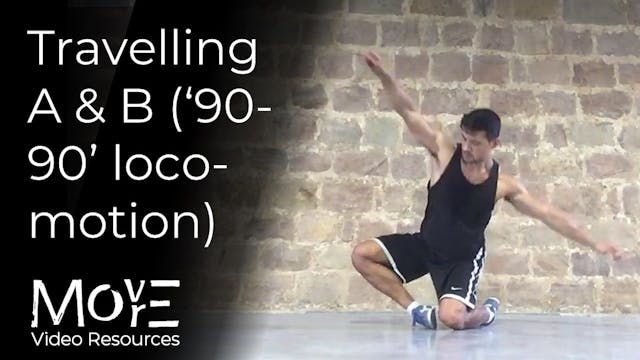Low-gait 'meia lua'
Fundamental squat & hip-mobility development
•
1m 21s
THE WHAT:
At the lowest-of-the-'low-gait' contexts sits the maximally-compressed squat form, from which any lower in space must be a transition into the floor. 'Low-gait balance contexts' (namely unilateral), then, carry both the valuable experience of unilateral lower-body practice context as well as the stresses of maximal knee-compression, string demands on ankle-stability and loaded extension of the toes.
LEARN MORE (subscriber-only):
https://drive.google.com/file/d/1svo8zeuEjXZuRTkGrHzJsKxJZk5dJ5fv/view?usp=drive_link
_____________________
For programming, guidance, & support for your physical practice:
FREE fundamental prehabilitation program: https://www.movemoremp.com/
Online Support (1 to 1 coaching): https://movemoremp.com/onlinesupport/
Elements (standardised programs): https://www.movemoremp.com/elements
[email protected]
Up Next in Fundamental squat & hip-mobility development
-
Travelling 'squat-bounce'
THE WHAT:
A simple & accessible squat context which expresses & develops the elasticity of the lower-body articulations and their intrinsic connection to the upper-body. As it travels through space it is fundamentally a LOCOMOTION-conditioning context, although, as a pattern in and of itself, it ... -
The Duck Walk
THE WHAT:
A progressively-extending locomotion context developing mobility, joint-integrity, and patterning of the general squat form in motion. In its most basic intent, the practice is of placing ever further-reaching bases of support (the foot), and then TRANSFERRING the weight of the body – “... -
The 'Travelling A & B'
THE WHAT & HOW:
The 'Travelling A & B' makes use of experience built with static '90-90' variations & transitions, connecting them in cyclical patterns to take the body locomoting through space in floor-contact. As such, they play between the worlds of seated (floor-contact) and kneeling, the lat...



